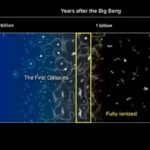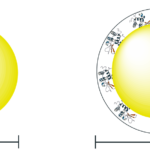If you are an early stage career scientist at DESY or Uni Hamburg and missed the last workshop but still want to publish a blogpost to communicate your science, you can either keep an eye out on the workshop program of the PIER Education Platform, on which we recurrently offer the workshop, or simply reach out to us. We might schedule an individual coaching sessions for you in which we cover the basics about blogging on this website and then set you up with an authors profile in order for you to get started on your own. This Blog is open for contributions from all researchers from Uni Hamburg, DESY or other partner institutions on the Bahrenfeld research campus.
- Tips and Tools to have a less Stressful PhD
by Saad
In this article, I am trying to share with you my own experience throughout my PhD time in Hamburg. The current article is not more than a personal experience where I am trying to share...
- Knowledge Makers – What to do when Scientists don’t yet “know”?
by Matthew Robinson
Scientists are sometimes simply presented to the world as people who “know things”. Whether they be Boffins, Profs, Sci-Guys or Poindexters, scientists are often asked to tell the world what they know. Most of the...
- Amazing Cosmic Sirens and the Expansion of the Universe
by Maria Elidaiana
Crisis in Cosmology! Check out how gravitational waves can be used as cosmic standard sirens in the difficult measurement of the Universe’s expansion rate, known as the Hubble constant.
- Dream of a Purple Sky
by Benoît Richard
Sometimes a weird dream inspires me to ask a seemingly mundane question, today about why our sky is not purple. The quest to explain it is surprisingly more insightful that what I expected at first.
- Once Upon a Dynamo in the Early Universe
by Pranjal Trivedi
New simulations by University of Hamburg researchers & collaborators at Australian National University reveal a powerful turbulent dynamo acting in the early Universe. This dynamo could have rapidly amplified the initially weak cosmic magnetic fields...
- How to go out and watch the first galaxies over 12 billion years ago
by Caroline Heneka
From Light to Dark & back to Light – A brief history At some point after the Big Bang the hot plasma opaque to light had cooled down enough so that during Recombination, electrons and...
- Studying the uncharted territories of the Standard Model using gravitational waves
by Cem Eröncel
Our current knowledge about the elementary constituents of Nature can be summarized by the Standard Model of Particle Physics. This model aims to describe what the elementary building blocks of the Universe are and how...
- In touch with dark matter at the Large Hadron Collider: possible or preposterous?
by Philipp
A new day dawns at the Swiss-French border It is 4am in a small village close to the Swiss and French border. The sound of a cock crowing rings through the air. However, this sound...
- Getting rid of ‘Corona’
by Saad
Once you read the title, the first thing that comes to your mind is the novel coronavirus, the vaccine, and the difficult situation we are facing right now. Keep calm, it’s not about this Corona,...























